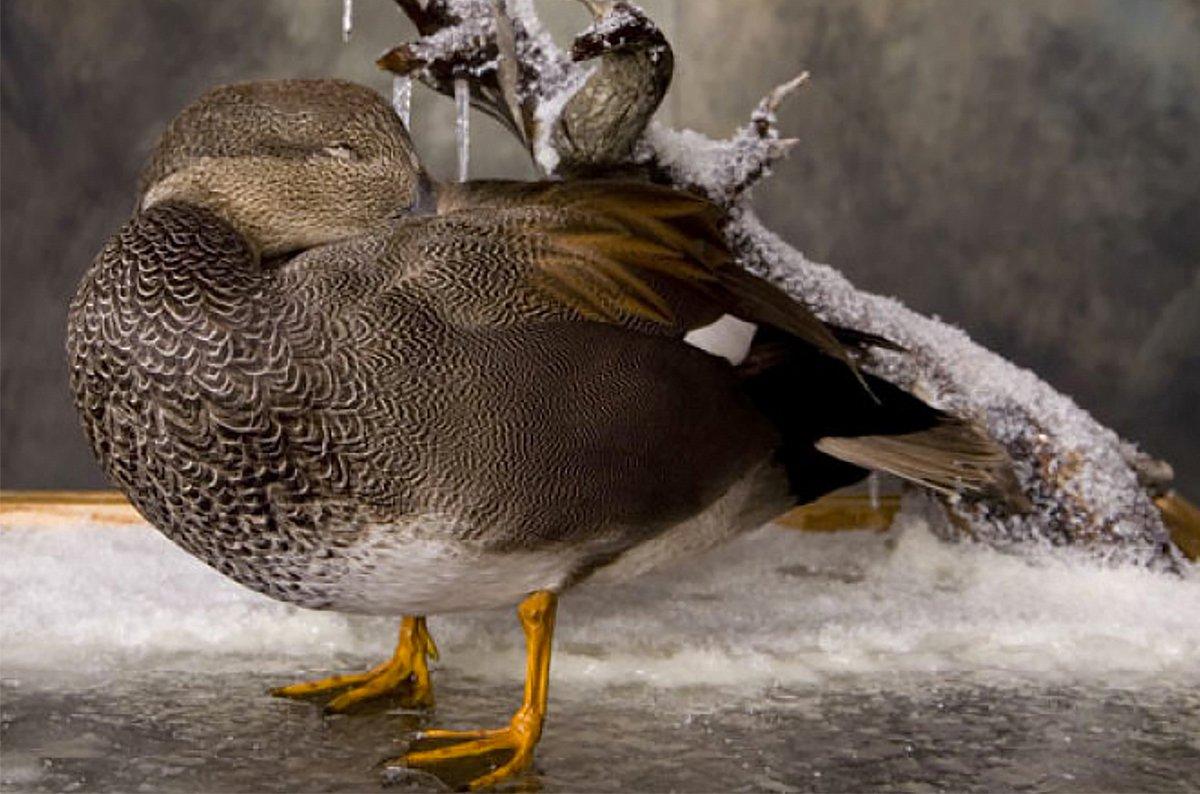Use These Expert Tips To Get Better Duck and Goose Mounts
Good waterfowl mounts immortalize birds and extend our memories of special days afield. Bad taxidermy, however, only serves to embarrass a substandard artist and perhaps a hunter who wanted to save money.
No serious waterfowler wants to be that guy, of course. When we save a bird for taxidermy, we want to receive a mounted specimen that reflects the original beauty of that trophy our dog delivered to hand. Still, many folks go about this incorrectly and end up with second-rate birds.
If you prefer art to a messy ball of feathers, heed the advice of world-class taxidermist Jerry Froelich, owner of Flyway Taxidermy in St. Cloud, Minnesota. Froelich has almost 20 years in the waterfowl taxidermy business, and won the Carl E. Akeley Award, the world championship of waterfowl taxidermy, in 2009 and 2011. Heck, Froelich even has an aviary outside his shop, so he lives and breathes waterfowl. Moreover, he knows what makes a good mount, and that starts with field care.
The most important thing is getting that bird cooled down after you harvest it and not letting it sit for a day or so, he said. Not getting them into a freezer or refrigerator, or frozen as soon as they can after the day, that's the top mistake. Get it cooled down so it doesn't decompose. Bag birds in airtight plastic bags, and freeze them as soon as possible.
Feather quality ranks second, Froelich said. Most folks want full-plumage birds in brilliant breeding colors, of course. That's often easy to recognize but not always apparent.
That decision can be made by the taxidermist when they bring it in, if they're in doubt, he said. Pretty much the later in the season you can get the bird, the better, but that doesn't always hold true with wood ducks or some others.
Many hunters fret about wounds, stains or broken bones on birds they consider worthy of taxidermy. Froelich said those concerns aren't deal-breakers, and his website provides clear guidelines.
Birds can have broken wings and pellet holes in their bills and feet, it said. Birds can be soiled with mud or blood. Keep birds out of direct sunlight as much as possible when in the field.
Of course, solid field care doesn't do much good if you take your duck or goose to the wrong taxidermist. Froelich said you should shop around to find the right fit.
I would try to steer them toward somebody that specializes in that area, he said. Those guys who are into birds like me, they know anatomy.
Specialists also offer many realistic options for poses. For example, Froelich's website features photographs of divers, puddlers, geese, swans, sea ducks and other birds in various lifelike scenes. Those options can spark ideas when considering how to get a bird mounted.
With all the work and detail involved in creating a quality mount, don't expect your once-in-a-lifetime work of art to be completed overnight, Froelich said.
Turnaround time is usually anywhere from eight to 15 months, he said. That's pretty normal. Some people get discouraged with that, but it's true with the top (taxidermists). With technology nowadays, everybody thinks the stuff gets done in two weeks. This is an art, and it's all hand made. Sometimes, stuff takes a little longer to dry. We play with a lot of different factors.
Likewise, a quality mount won't stay beautiful forever unless you follow some routine maintenance steps.
Once you get that mount home, try to keep it out of direct sunlight, and try to keep it away from people petting and touching it, Froelich said. Oily hands from people and smoking — those are the two biggest dangers.
Froelich said you should dust duck or goose mounts regularly with a feather duster, as the feather-on-feather action works best for gentle cleaning without damaging the mount.
Provided you do your part, mounts from a quality taxidermist such as Froelich should last many years. I should know, as five Flyway Taxidermy mounts — two gadwall, a goldeneye, a lesser scaup and a bull canvasback — adorn my hunting room. Oh, there's an empty space, too — just perfect for the drake bufflehead I'll pick up from Froelich when he's finished with it.
Click here for more Realtree waterfowl hunting content. And check us out on Facebook.










